The effects of the COVID-19 pandemic continue to influence many aspects of our daily lives and establish new behavioral patterns within shared public areas. While social distancing and hygiene remain the strongest recommendations against the novel virus, there is a general concern that airplanes are not the best examples of these. This makes the airline industry to investigate how it can ensure safe and fearless traveling. They commission designers to work out solutions that would offer future passengers more personal space, not only from a comfort perspective, as it was before, but mainly from a health and safety standpoint.
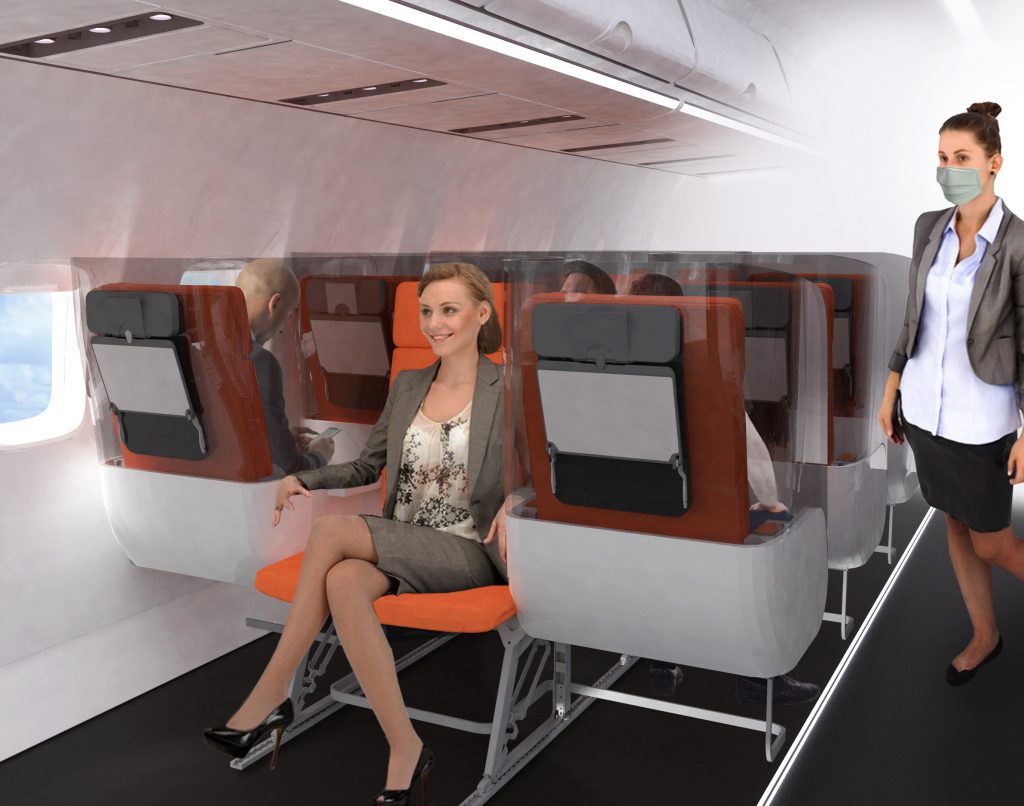
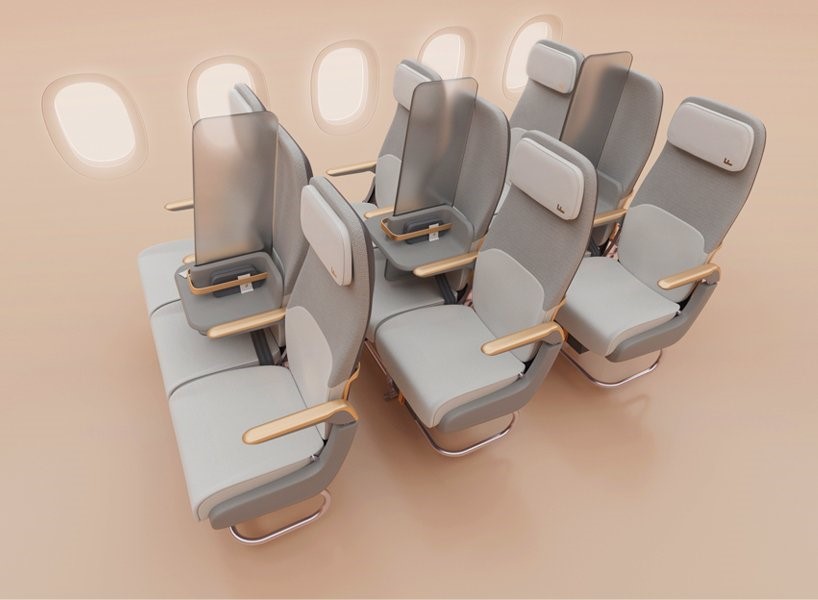
Isolate by Factorydesign
Although recent studies claim that the cabin air quality is comparable to what is observed in other indoor environments, most air companies try to reassure their customers that their health is protected while on board. One of the simplest ways to do is to keep the middle seat vacant for future travelling post-COVID-19 as a way to maintain social distancing (which is also possible for the loads of passengers decrease these days). Following this trend, the British studio Factorydesign has created ‘Isolate’, a social distancing kit that transforms the middle seat into a screen providing separation for adjacent passengers as well as extra personal space.
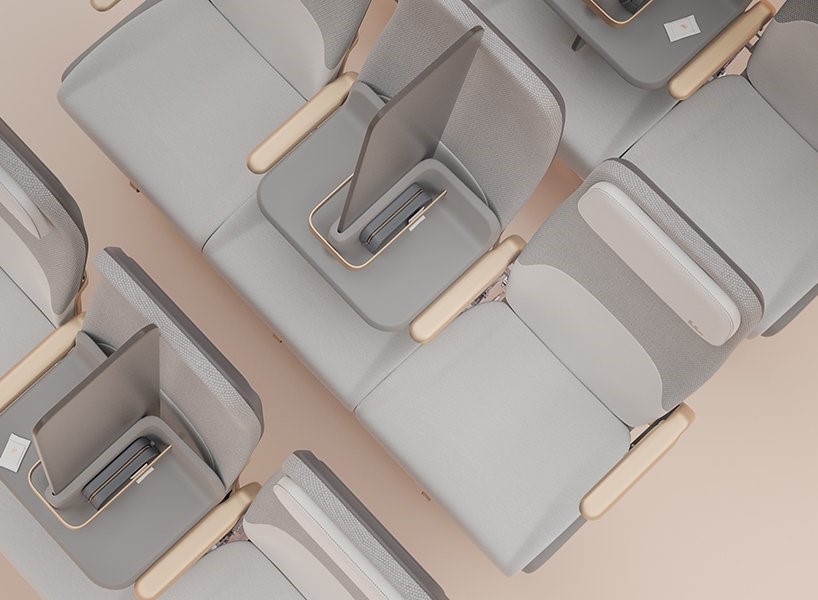
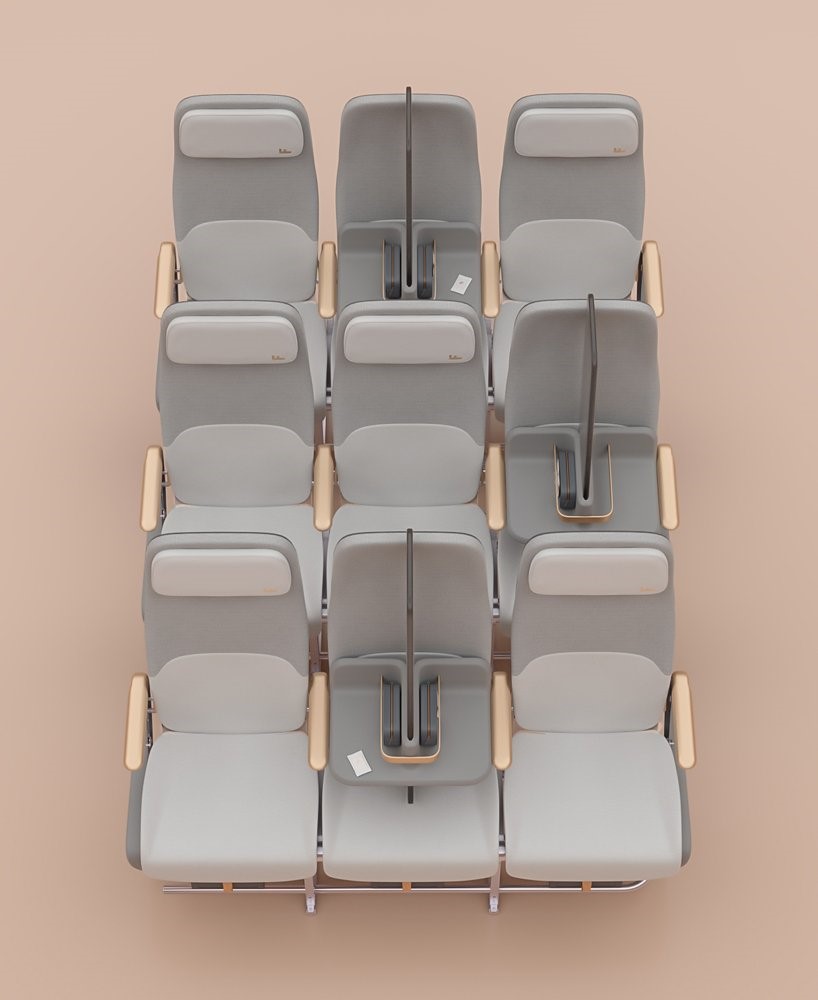
Isolate by Factorydesign
The kit features a translucent thermoplastic screen supported by a light-weight tabletop. The screen allows light to pass through, so that the cabin is not visually oppressive. The whole feature is supported by the armrests and securely belted into position. It can be fitted to any seat, not only the middle one – for example, to facilitate travelling couples who would rather be screened from the aisle. After use, the kit can be easily disassembled and stowed away.
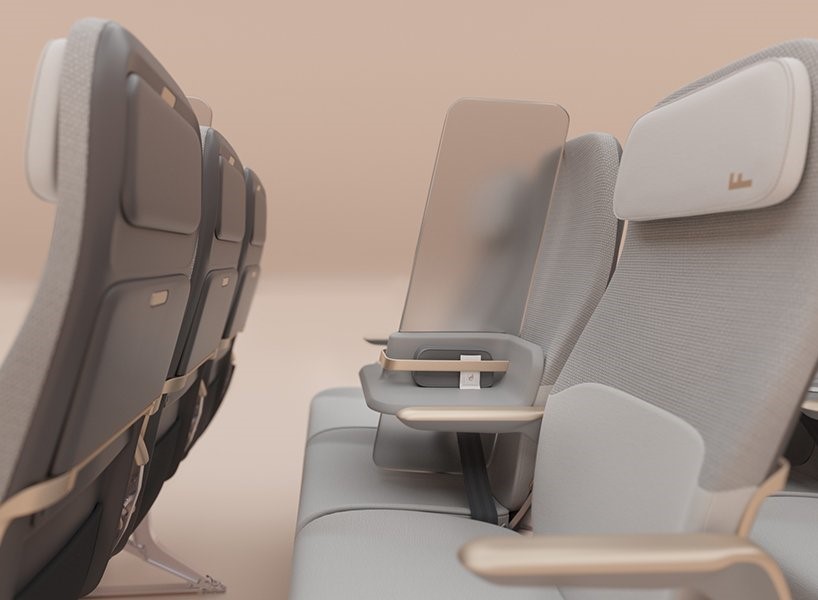
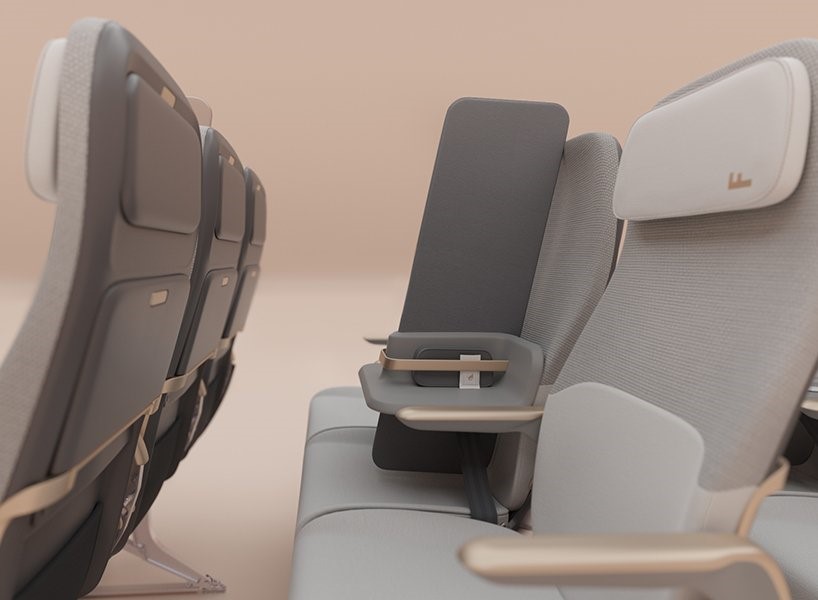
Isolate by Factorydesign
All surfaces of ‘Isolate’ are easy to clean and sanitize. Alternatively, the screen can be produced in a lightweight thermo-formed foam, with a cleanable leather trim, providing more privacy for the passengers and a more sophisticated look.
The team suggests the kit could be useful even after the COVID-19 crisis is over, as it can transform short haul economy class seats into a business class offering.
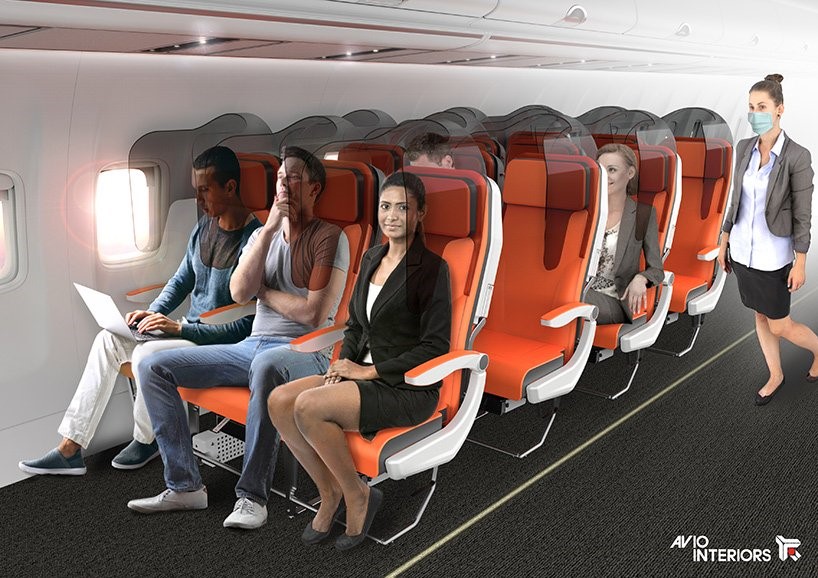
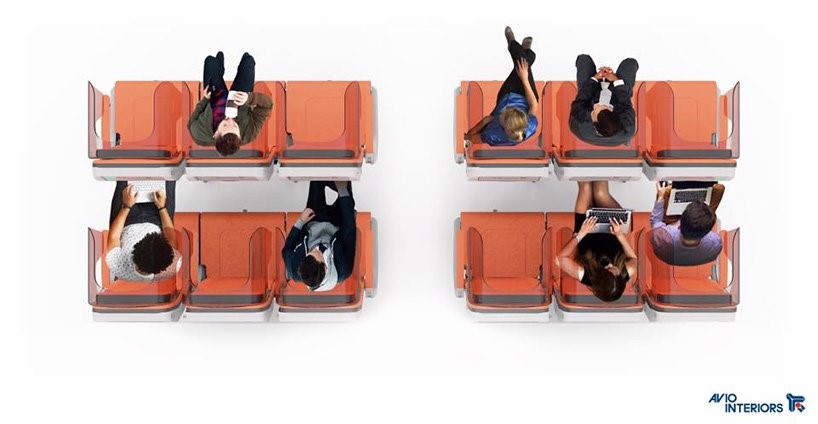
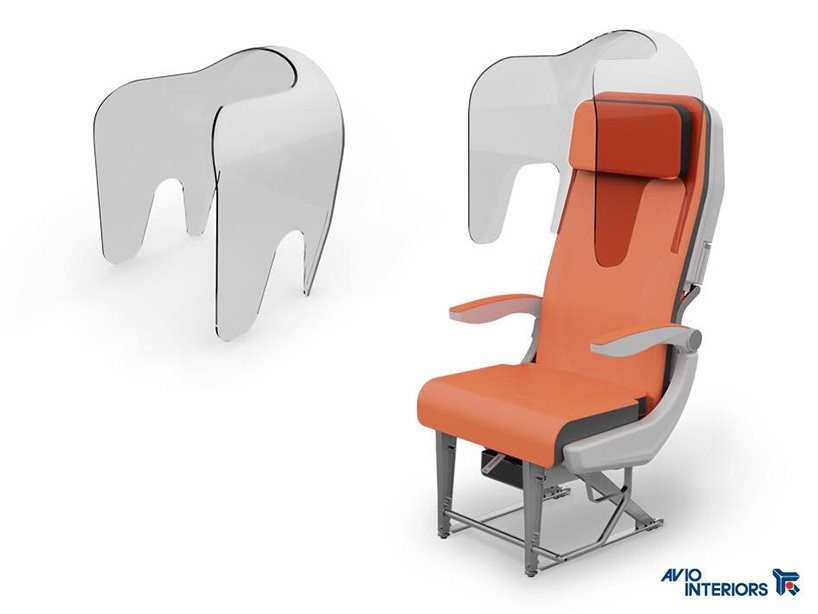
Glassafe by Avio Interiors
Italian company Avio Interiors offers two proposals for the future of air travel. The first one, named ‘Glassafe’ is a kit-level concept featuring a shield that can be applied to existing seats to reduce interaction among passengers and thus minimize the chances of passing on the virus. Unlike a basic partition, the proposal involves creating an isolated volume around each passenger. The kit is available in two options: transparent to provide a more airy cabin or opaque for more privacy.
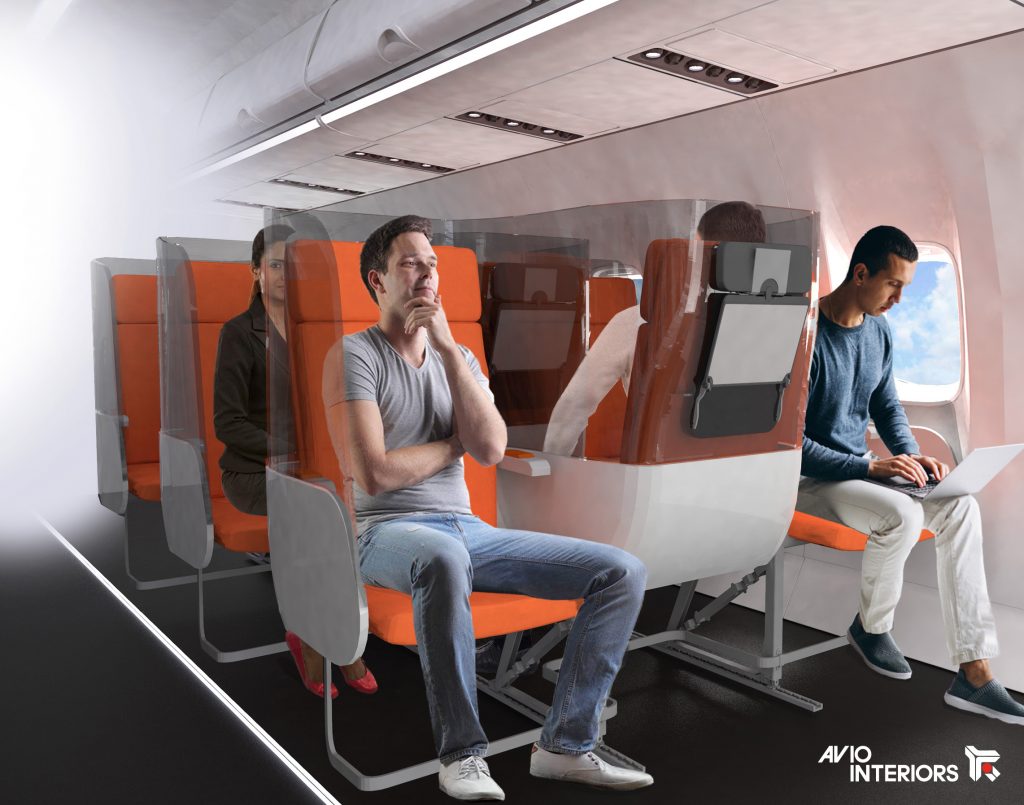
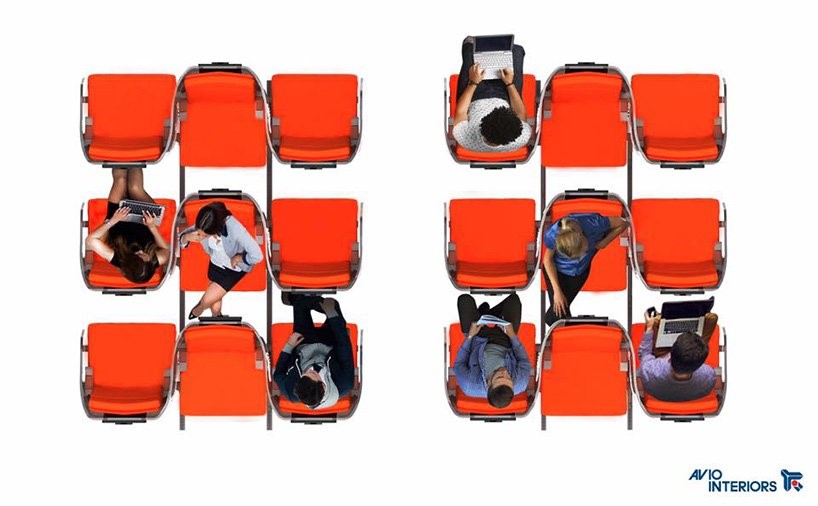
Janus by Avio Interiors (also header image)
The second solution involves reverse position of the middle seat and is aptly named ‘Janus’ referencing the two-faced Ancient Roman god with two faces. To ensure maximum isolation seated next to each other, the designers propose that passengers seated next to the aisle and to the window are oriented in the direction of the flight, while the person in the middle seat travels facing backwards.
Each seat is surrounded on three sides by a partition system that minimizes contact between the passengers in a row as well as offers extra protection from flight attendants using the aisle. Just like with the ‘Glassafe’, the ‘Janus’ shield comes in an opaque material or with different degrees of transparency.
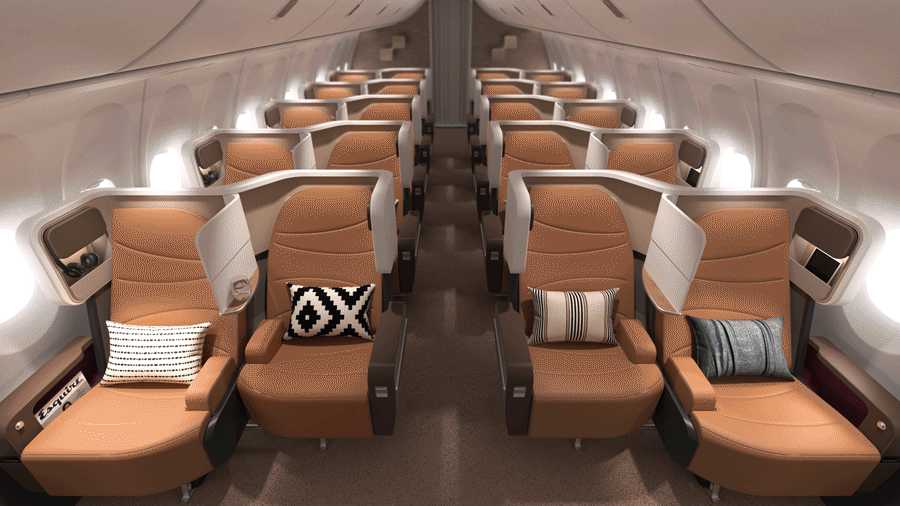
Butterfly Seating by James Lee, Vincent Tam and Lars Rinne
The ‘Butterfly Seating’ by James Lee, Vincent Tam and Lars Rinne is a more advanced seating solution for social distancing inside aircrafts. Developed for premium economy/regional business class, the solution allows adjusting cabin configuration on real time demand for each flight.
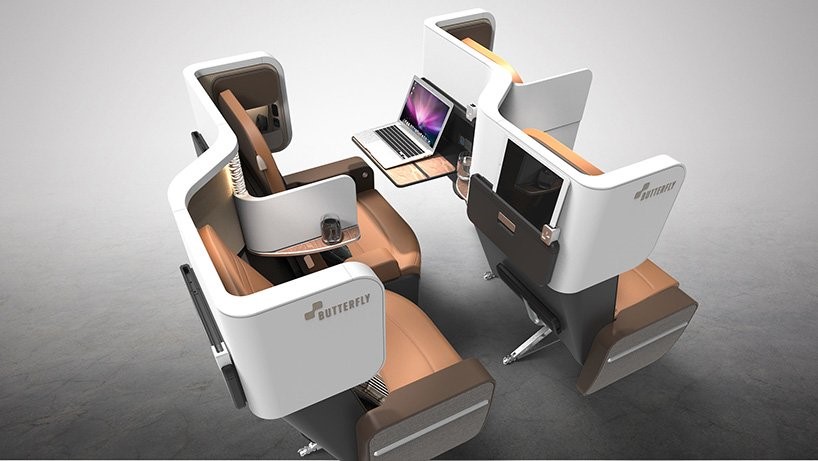
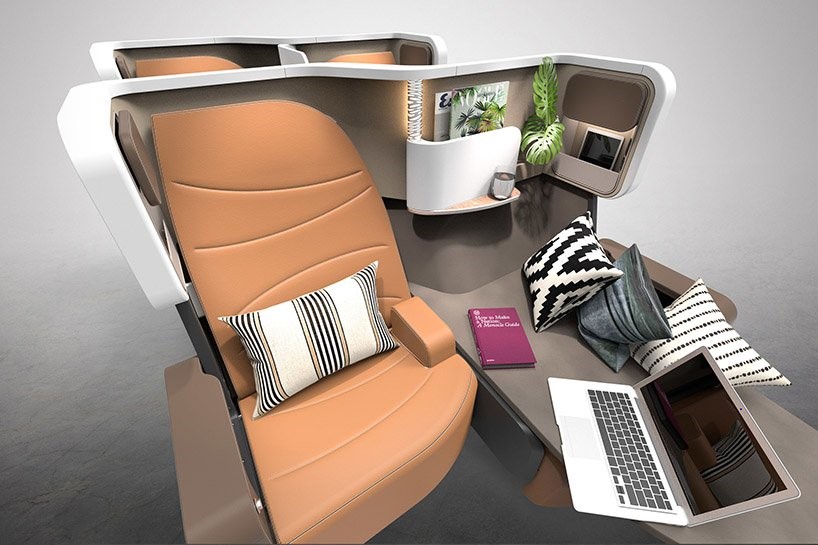
Butterfly Seating by James Lee, Vincent Tam and Lars Rinne
Each suite is composed of two seats in a staggered arrangement which minimizes the contact between the passengers and potential spread of the virus. Even when both seats are upright, the passengers are provided increased personal space, their elbows offset from one another. However, when the inboard seat is flipped down, it transforms the premium economy seating into a private suite with a long-haul flatbed for a unique home-like ambience, and direct aisle access and unlimited elbow room as extra benefits.
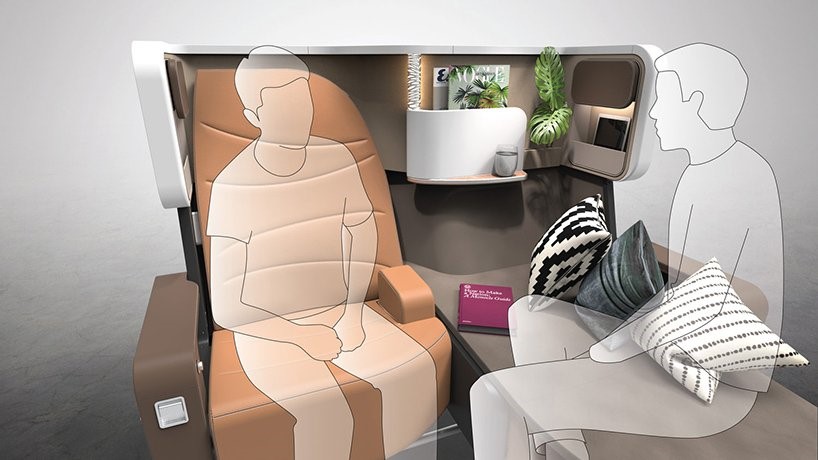
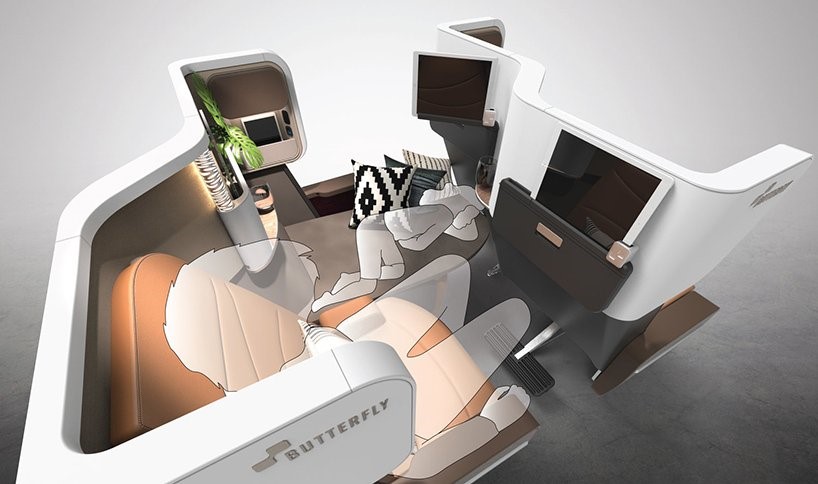
Butterfly Seating by James Lee, Vincent Tam and Lars Rinne
Apart from meeting the challenges of social distancing, the Butterfly Seating provides the most efficient use of precious cabin space. The designer suggests that aircrafts should no longer be limited by a fixed cabin configuration, thus enabling higher profitability for the air company.